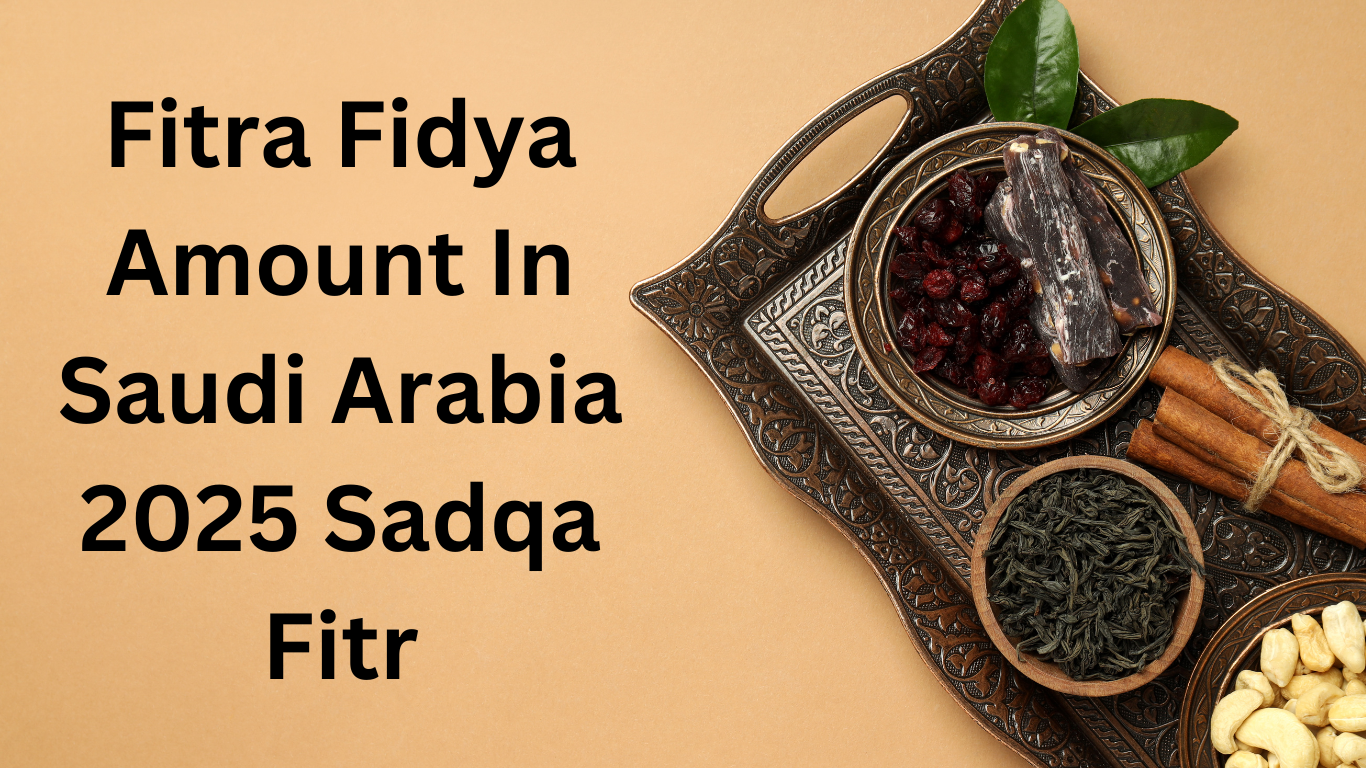When Ramadan comes to an end, the blessed act of giving Zakat al-Fitr, also known as Sadaqa Fitr, becomes an essential part of celebrating Eid al-Fitr. A vital duty for all Muslims, Zakat al-Fitr serves as a means to purify one’s fasting efforts and provide assistance to those in need.
This blog explores the details of Zakat al-Fitr and the Fitra Fidya Amount in Saudi Arabia for 2025, outlining the rules, methods, and timing of payment, as well as its spiritual significance.
What is Zakat al-Fitr?
Zakat al-Fitr, often called the charity of fast-breaking, is a mandatory charitable act at the end of Ramadan for every Muslim—be it an adult, child, male, or female. It is given in the form of food or its cash equivalent to assist those most in need during the joyous celebration of Eid.
The purpose of Zakat al-Fitr is beautifully expressed in the words of Ibn Abbas (RAA):
“The Messenger of Allah (PBUH) prescribed Zakat al-Fitr as a way to cleanse the fasting person from any shortcomings in their behavior or speech, while also spreading kindness by providing food for those in need.”
By ensuring all Muslims can take part in Eid festivities, this act demonstrates compassion and unity within the Islamic community.
When Should Zakat al-Fitr Be Paid?
The ideal time to pay Zakat al-Fitr is after sunset on the last day of Ramadan and before the Eid prayer. However, it is also permissible to pay it one or two days before Eid.
Paying Zakat after the Eid prayer turns it into regular charity (Sadaqa) rather than fulfilling the obligation.
How to Calculate Zakat al-Fitr
Calculating Zakat al-Fitr requires an understanding of its traditional measure, which is approximately 2.176 kilograms of a commonly consumed staple food such as wheat, rice, or barley.
For simplicity, and to account for varying food prices, Muslims in Saudi Arabia may pay the equivalent amount in cash as determined by scholars.
Zakat al-Fitr Amount in Saudi Arabia for 2025
For 2025, the Council of Senior Scholars in Saudi Arabia has set the Zakat al-Fitr cash amount at 30 Saudi Riyals (SR) per person. Alternatively, those wishing to provide food can use 2.3 kilograms of rice, 2.1 kilograms of lentils, or equivalent quantities of other grains such as chickpeas or barley.
Families should calculate the amount based on the number of household members under their care. For example, a family of five would need to pay 150 Saudi Riyals (5 x 30 SR).
How to Pay Zakat al-Fitr in Saudi Arabia
Saudi residents are encouraged to fulfill their obligation using modern and convenient digital solutions. A prime example is Ehsan, the National Platform for Charitable Work, launched in 2021.
Paying Zakat Through Ehsan
The Ehsan platform simplifies the process of giving charity, and enables users to:
- Select their governorate for targeted donations.
- Specify the number of individuals they are paying Zakat for.
- Complete payments quickly via the website or app.
This secure and convenient service has seen widespread adoption, ensuring accurate and timely distribution of Zakat to deserving recipients.
Additionally, Zakat al-Fitr can still be paid through traditional methods such as purchasing food directly or donating through street vendors or local stores.
Who Must Pay Zakat al-Fitr?
Zakat al-Fitr is obligatory for every Muslim who has the means to provide the required amount without compromising their basic needs. Here’s how the obligation extends across different groups of people:
Married Women
While the Hanafi school states that married women should pay Zakat al-Fitr from their personal wealth, other schools of thought hold husbands responsible for payment on behalf of their wives.
Children
If a child owns personal wealth, Zakat al-Fitr must be paid from their property. Otherwise, guardians pay it on their behalf. Generally, it is obligatory for all minors but not for a fetus in the womb, though some scholars encourage it as an act of Sadaqa.
The Poor
Even those with limited resources are urged to pay if they possess enough to meet their needs for the day of Eid. The sole exemption applies to those who lack food, shelter, and basic necessities.
Who Receives Zakat al-Fitr?
Scholars agree that Zakat al-Fitr is meant to benefit poor Muslims. It cannot be given to relatives whom the donor is obligated to support (such as parents, spouses, or children) or to non-Muslims.
Distribution Guidelines
- A poor person may accept Zakat from more than one donor, but dividing a single Zakat payment among multiple individuals contradicts the purpose of sufficing the needy on Eid.
- Some schools of thought, like the Hanbalis, insist that Zakat al-Fitr must be restricted to the poor, while others allow broader categories including travelers and debtors.
The Significance of Zakat al-Fitr
Beyond its practical benefits, Zakat al-Fitr holds tremendous spiritual value. It ensures the inclusion of all Muslims in the celebration of Eid, fosters solidarity among community members, and purifies any shortcomings during the fasting month.
Prophet Muhammad (PBUH) highlighted the importance of timeliness when he said that Zakat al-Fitr is accepted as purification if paid before the Eid prayer. Afterward, it is considered a standard act of charity.
Common Misconceptions About Zakat al-Fitr
There’s often confusion about the differences between Zakat al-Fitr and Zakat al-Mal (the obligatory annual alms on wealth). Here’s a quick comparison:
- Source – Zakat al-Mal relates to wealth; Zakat al-Fitr relates to the person.
- Timing – Zakat al-Mal is due yearly; Zakat al-Fitr is tied to the Eid celebration.
- Eligibility – Zakat al-Mal applies to those exceeding the Nisab threshold; Zakat al-Fitr is obligatory for most Muslims.
A Giving Community During Ramadan
Across Saudi Arabia and the world, paying Zakat al-Fitr fosters a profound sense of unity during Eid. It’s a beautiful reminder of our collective responsibility toward vulnerable members of society.

